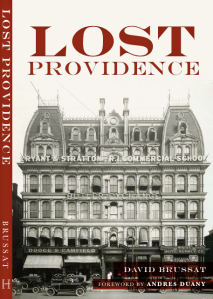
Chapel at Seaside, Fla. designed by Scott Merrill. (bettercities.net)
Scott Merrill, an architect best known for his work in Seaside and other New Urbanist communities, has won this year’s Driehaus Prize, annually awarded by the school of architecture at the University of Notre Dame. Named for Chicago philanthropist and entrepreneur Richard H. Driehaus, the award comes with a stipend of $200,000, twice that of the more noted (but less notable) Pritzker Prize.
Merrill’s most celebrated building is his chapel at Seaside, pictured above, and completed in 2001. It typifies his work, if that can be said of the wide portfolio of the firm he started in 1990, Merrill, Pastor & Colgan Architects, headquartered in Vero Beach, Fla., for which he still does most of the design work. His “style” is a sort of stick classical, with an inspired vernacularity of tone, spare but unafraid of classicizing tendencies.
To judge by his chat with Archinect magazine soon after being notified of his laureateship a couple of days ago, Merrill does not like to pigeonhole himself. He dodged constant invitations by the Archinect interviewer to comment on any distinctions that might reveal his opinion about classical architecture. But he is willing to assert that he puts people at the center of his designs. To those of us who consider modern architecture to be, all too often, an exercise in the marginalization of people (to put it gently), that may stand as a declaration of his classicist tendencies.
Curiously, a couple of days ago, before I became aware of this year’s Driehaus winners, I cited Léon Krier’s town hall at Windsor as a good candidate for the “left edge,” so to speak, of the classical revival. Scott Merrill’s work arguably falls into that category, and in fact Krier’s town hall is listed as one of the projects in Merrill’s firm’s portfolio. Not too long ago, Andrés Duany, whose firm DPZ (Duany Plater-Zyberk) masterplanned both Seaside and Windsor, informed the TradArch list that Merrill was one of a small host of traditional architects, mostly from the South, who had recently dabbled in modernism. Well, no sin in that – though it apparently is a sin for modernist architects to design classical architecture (if not to live in it). So Merrill remains a trad in good standing.
After all, Krier masterplanned Poundbury, belly of the beast (along with Seaside) to the modernist critical elite! The nomenclatural debate fostered by Duany (also, with Krier, a Driehaus laureate) is a quagmire and a half. He tries to irk trads by claiming that this or that design is PoMo (postmodern). In the past he has called Merrill’s work postmodern but now, aware of the term’s inadequacy as a descriptive, describes Merrill’s work as “heterodox.” Notre Dame gave a real postmodernist, the late Michael Graves, a Driehaus in 2012, but has not made that mistake again since. To pigeonhole traditional architecture of any stripe in today’s anything-goes classical discourse and practice is clearly a tough job. Who can blame Merrill for refusing to take Archinect’s bait?
So, congratulations to Scott Merrill for winning this year’s Driehaus, and also to the winner of its partner award, the Henry Hope Reed Prize, Havana’s city historian, Eusebio Leal Spengler, for his role in preserving the Cuban capital’s classical architecture. The classical revival marches forward.


